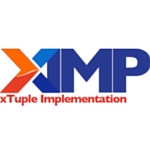
A smart company’s leadership will always probe their operational departments on “How do we do this?” and “Who does this?” — followed up by the hard question “Why do we do this?”
Yes, the reasons vary widely as to why a business would want to implement an enterprise resource planning (ERP) system. First and foremost firms want to knit the organization together on a common platform, an integrated business operating system. (That benefit alone warrants an entire article.)
Other bottom-line benefits that firms seek — and achieve — with a solid ERP implementation will frequently percolate up through evaluation of specific functionality in an ERP business system:
- Faster production times in manufacturing
- Faster response times in distribution
- Ability to provide better quicker customer service
- Insights into costing that facilitate better product mix and pricing decisions
- Lower inventory levels while simultaneously reducing stock outages
While there is much more valuable functionality in ERP, in this article we focus our attention on the hidden benefits that are attributable NOT to just using ERP software but the benefits that come from implementing it.
That’s right, the process of implementing ERP is full of tangible benefits. After dozens upon dozens of implementations in my career, I not only expect it, I anticipate it. The typical scenario goes something like this:
- The project team gets selected and then trained.
- The piloting process starts, while also beginning to assess what data can and will be imported. (The initial pilots are primarily about learning the various options available for business process flows. I call this “filling up the toolkit.”)
- We begin to hone in on HOW the business will operate on the ERP system.
- Department heads and other key users are brought in, and this is where it usually gets very interesting. (inevitably and often, this occurs once we have scaled a pilot with imported data)
Implementing anything requires three basic elements:
- Defining the As-Is (point A)
- Defining the To-Be (point B)
- Defining a transition plan (the path from point A to point B)
To navigate from point A to point B, we need to know not just where both points are, but to also develop the routing between them. In an ERP implementation the initial focus is frequently on the To-Be and the transition plan. Organizations quickly learn they know much less about themselves than previously thought, and the implementation highlights this.
Example ONE — So that's how we do it!
I vividly recall one pivotal implementation — sitting in a conference room conducting a pilot with the head of operations and his staff. The topic of customer service came up, and a call went out to the head of that department. I listened intently to the conversation as the two attempted to come to an agreement on how the process worked today! Both parties were learning things they did not know about the other’s workflow. All the while I was plotting a flow diagram based on what I heard. Finally, when they had come to a consensus on how it currently worked, I revealed what I had been doing by posting the diagram on our white board.
“So that’s how we do it!”
Just knowing this was a huge benefit, even if we had halted the implementation right there. Of course, we did not, AND we used that “As-Is” flow diagram to determine how we could do a better customer service job through the ERP system, and how we could transition to it.
Example TWO — We need to get our house-in-order!
I had been working for many months with a large organization assisting with their implementation, a significant company-wide effort that would touch every corner of the enterprise. We were in the final stages, and I was ready to depart from the penultimate site visit. My next visit, just four weeks later, would be for the go-live. They had proven to themselves their readiness to go-live with repeated end-user scripted pilots. The scripted pilot employs a scaled database (one with all of their imported data) and a written script that end users perform in their work area. It depicts a day-in-the-life of the business for each department, and users must complete it unassisted. They passed.
As I was packing my briefcase, the Senior Vice President of Operations popped in and said, “We need you to delay your next visit by one month.”
I was, to say the least, surprised and he could see this on my face.
“The implementation process has highlighted for us a number of operational shortcomings that we need to address.”
He went on to say that the process of implementing the software, in isolation, had been an eye-opener — and a big benefit — but that they wanted to address these internal discrepancies BEFORE go-live rather than AFTER. Most notably, there was a procedural disconnect between the department responsible to determining product formulations and those responsible for manufacturing them.
“Mike, we need to get our house in order first,” he said.
And to this day I call it just that: House-in-order syndrome.
The firms I work with are usually smaller companies on the cusp of significant growth. They have outgrown stovepipe solutions and manual processes and are looking for a way to more tightly link processes and people together as a foundation for that growth. ERP software is a means to that end; the implementation is the starting point for achieving that goal.
The implementation alone has benefits that are immediate and tangible. It requires firms to ask, “How do we do this? Who does this?” and dare I ask, “Why do we do this?”
Smart leadership asks “Is there a better way to do this?”
So, start an implementation right away, the answers you get to these and many other questions might surprise you and pay big dividends before you go-live and long afterwards.
